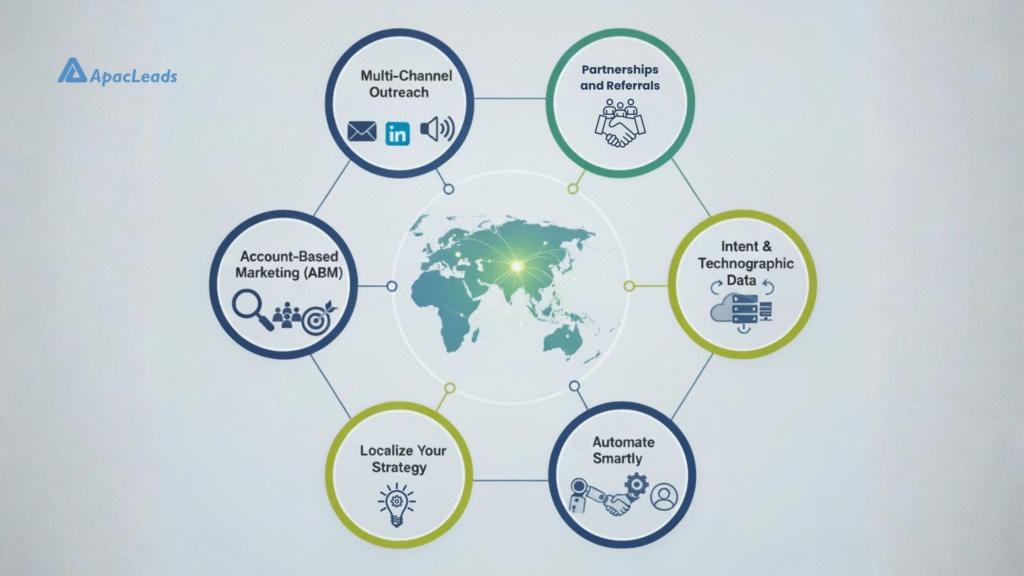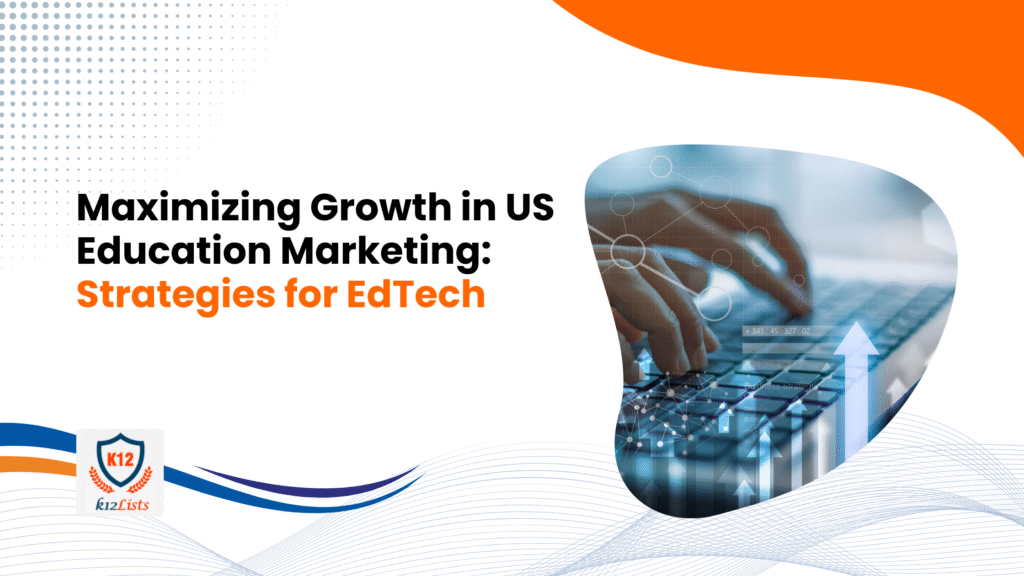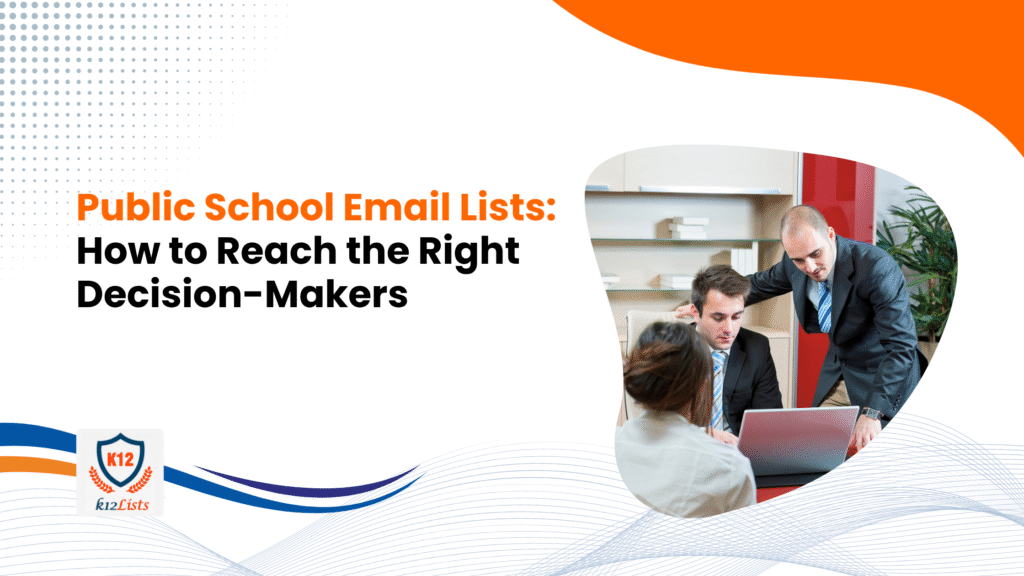The US K-12 education sector is one of the most dynamic and rapidly evolving markets for businesses today. From digital classrooms to AI-powered learning platforms, schools, colleges, and universities are constantly seeking innovative products and solutions. For EdTech companies, curriculum publishers, training providers, and education service vendors, the challenge isn’t finding opportunities—it’s knowing how to effectively reach the right decision-makers within the sector.
Whether you are targeting public schools, private schools, colleges, or universities, understanding who makes the purchasing decisions and leveraging verified education email lists can significantly improve your outreach efforts. In this guide, we’ll explore strategies for maximizing growth in US education marketing, focusing on the value of targeting the right contacts within the K-12, higher education, and public school district sectors.
Understanding the US K-12 Education Market
The US education system is massive, comprising over 130,000 public and private schools across the country. But not all educational institutions operate in the same way. Understanding the decision-making structures in K-12 schools, colleges, and universities is crucial for any business seeking to expand in this market.
For EdTech companies, having access to verified email lists helps streamline your outreach by targeting the right people:
- Superintendents & District Leaders: They make overall strategic and budget decisions for districts.
- Principals & School Administrators: They manage individual schools and evaluate products for adoption.
- Curriculum Directors & Department Heads: They influence the adoption of learning tools, content, and EdTech solutions.
- IT Directors & Procurement Managers: They are the ones who evaluate and purchase technology solutions for their schools or districts.
Targeting generic contacts or large, unverified lists can waste time and marketing budget. Instead, focusing on verified decision-makers will ensure that your message reaches the right person who has the authority to make purchasing decisions.
Why Verified Email Lists Are Essential for EdTech Marketing

Verified K-12 Email Lists and other education-related lists-such as Public Secondary School Email List, College Email Lists, and Public School Districts Email List are essential for EdTech marketing because they provide the accuracy and engagement needed for effective campaigns. Here’s why verified email lists matter:
- Higher Deliverability: Sending emails to verified addresses ensures that your messages reach their intended recipients, reducing bounce rates and spam complaints.
- Better Engagement: Decision-makers are more likely to open and respond to relevant emails. Verified contacts ensure your message reaches active, engaged individuals.
- Improved ROI: By targeting the right decision-makers, each email is more likely to generate conversions with fewer resources.
- Targeted Campaigns: Verified lists allow you to segment your audience based on role, school type, district size, and location, enabling personalized messaging that resonates with the right people.
By using verified data, EdTech companies can dramatically increase campaign effectiveness and reduce wasted marketing efforts.
Key Strategies to Maximize Growth in Education Marketing

1. Target the Right Decision-Makers
The first step in successful education marketing is targeting the right decision-makers within the education ecosystem. Using a verified K-12 email list allows you to connect with:
- Superintendents and district leaders who handle strategic and budget decisions.
- Principals and administrators who evaluate solutions at the school level.
- Curriculum heads and department directors who influence the adoption of learning tools.
- IT and procurement managers responsible for tech adoption.
Segment your email campaigns based on these roles to maximize engagement and increase your chances of making an impact.
2. Personalize Your Messaging
Personalization isn’t just about using a recipient’s first name. It’s about tailoring your message to each specific audience. Whether you are targeting a Public Elementary School or a College, your messaging should reflect:
- School Type: K-12 schools may prioritize affordability, while colleges may focus on scalability or advanced features.
- Role-Specific Needs: IT directors care about compatibility with existing systems; curriculum directors are interested in how tools improve learning outcomes.
- Regional Context: Reference state-specific education initiatives, funding cycles, or local educational goals.
Personalized messaging has been shown to increase open rates and response rates by 3-4x compared to generic emails.
3. Multi-Channel Outreach
While email marketing is still a cornerstone of B2B outreach, multi-channel strategies provide greater engagement. Here’s how to leverage multiple channels:
- LinkedIn & Professional Networks: Use LinkedIn to engage directly with decision-makers, share thought leadership, and establish your authority in the education space.
- Webinars & Virtual Events: Hosting virtual events, product demos, or webinars helps establish your brand as a thought leader while offering tangible value to educators.
- Content Marketing: Educational blogs, case studies, and white papers tailored to K-12 schools or public school districts can increase your credibility and drive trust in your brand.
Combining email with social media and content marketing enhances your campaign’s reach and strengthens engagement.
4. Leverage Verified Data for Segmentation
Verified K-12 email lists allow for precise segmentation:
- By school type: Private, public, charter schools, etc.
- By role: Principals, IT directors, curriculum heads.
- By location: District, state, or region.
Segmentation allows you to send targeted, personalized content that is more relevant to each recipient, improving open rates, click-through rates, and conversions.
5. Measure and Optimize Campaigns
The best campaigns are data-driven. Measure the performance of your outreach to refine future efforts:
- Track engagement metrics like open rates, click-through rates, and responses.
- Analyze role-specific interactions and adjust your messaging accordingly.
- Optimize conversion paths to ensure maximum ROI.
Using data to guide your campaigns ensures they evolve to meet the needs of your audience, improving long-term results.
Common Mistakes EdTech Companies Make
- Chasing Quantity Over Quality: Relying on large, unverified lists can result in low engagement and wasted spend.
- Using Outdated Contacts: Email lists degrade over time. Failing to update and verify data leads to ineffective campaigns.
- Generic Messaging: Sending one-size-fits-all emails isn’t effective. Each recipient should feel the message is tailored to their role and institution.
- Ignoring Multi-Channel Outreach: Limiting your outreach to email alone misses opportunities for broader engagement.
By avoiding these mistakes, EdTech companies can ensure their marketing is both efficient and effective.
How Verified K-12 Email Data Helps B2B Marketers
Verified K-12 email lists empower EdTech marketers to:
- Reach decision-makers across districts, schools, and universities.
- Improve deliverability and ensure messages land in inboxes.
- Personalize campaigns for better engagement.
- Expand into new regions and target specific school types without wasting resources.
Using verified email data is more than just a best practice-it’s essential for targeting the right audience and driving meaningful business growth.
The Future of US Education Marketing: What EdTech Companies Should Expect

As the US education market continues to evolve, EdTech companies must adapt to stay ahead. Here’s what the future holds for education marketing:
- AI-Powered Decision-Maker Targeting: Predictive analytics will enable marketers to identify the right districts or schools that are likely to adopt new technologies.
- Hyper-Personalization at Scale: Marketing will move beyond simple personalization to include adaptive content, behavioral triggers, and real-time insights.
- Integrated Multi-Channel Outreach: Combining email with social media, webinars, and CRM will create a cohesive, effective outreach experience.
- Greater Reliance on Verified Data: Data accuracy will be critical for reaching education decision-makers efficiently and avoiding wasted marketing efforts.
- Predictive Campaign Insights: Data-driven predictive tools will allow marketers to forecast when institutions are likely to invest in new products.
By investing in verified K-12 email lists, leveraging AI, and embracing multi-channel marketing, companies will position themselves for success in the rapidly evolving education market.
Conclusion
Maximizing growth in US education marketing requires precision, data, and strategy. By targeting verified K-12 contacts, personalizing outreach, and leveraging multi-channel campaigns, EdTech and education service providers can connect with the right decision-makers across schools, colleges, and universities.
If you’re ready to reach superintendents, principals, curriculum heads, and IT managers, invest in a verified K-12 email list to ensure your campaigns are efficient, relevant, and high-performing.
Get Your Verified K-12 Email List Now and Start Reaching the Right Education Decision-Makers!
FAQs
A Targeted K-12 email list contains accurate, up-to-date contacts of decision-makers in schools and districts, ensuring better engagement and ROI.
Superintendents, principals, curriculum directors, department heads, IT directors, and procurement managers.
By using verified, segmented email lists, personalizing messaging, and continuously tracking and optimizing campaigns.
Yes, you can segment by school type (private, public, charter), district size, state, or region.
It will ensure emails reach active, relevant decision-makers, reducing bounce rates and increasing open rates, clicks, and conversions.






